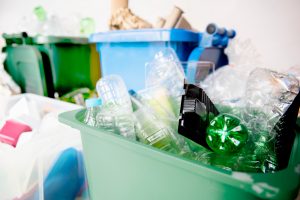In the previous article in our series, we looked at the state of the packaging industry to get a sense of how truly enormous the market is for packaging, and therefore how much waste and impact it all has on the environment. In this article, we’re going to look at what companies and governments are doing about it. The truth is, packaging and the environmental impact is important to discuss.
The Response From Retailers and Manufacturers
There are a lot of things happening on the retailer front when it comes to packaging. For example Walmart, the largest retailer in the world, has embraced sustainable packaging. It has moved away from a “take-make-dispose” approach to asking its whole supply chain to embrace zero waste and include the reuse and regeneration of materials throughout its operations, which includes packaging.
Amazon.com, the world’s largest online retailer, is using a science-based approach to reinvent and simplify its sustainable packaging options. This, says Amazon, combines lab testing, machine learning, materials science, and manufacturing partnerships to scale sustainable change across the packaging supply chain.
In 2008, Amazon introduced Frustration-Free Packaging (FFP) to help manufacturers reduce packaging waste and develop sustainable alternatives for online fulfillment. The program incentivizes manufacturers to package their products in easy-to-open packaging that is 100% recyclable and ready to ship to customers without additional Amazon boxes. As of June 2021, Amazon reports that it has reduced the weight of outbound packaging by over 36% and eliminated more than one million tons of packaging material since 2015—the equivalent of 2 billion shipping boxes.
If you use Amazon regularly, as well, you may have also noticed that they frequently try to combine packages to reduce the number of boxes used in their shipments.
From a manufacturing perspective, packaging is also a major concern. The Mars company, a leading global food and pet brand, took the lead to redesign its packaging to be recycled. Recently its U.S.-based Mars Wrigley team began production of its Orbit Gum 30-piece Mega Pack. This new design features an outer plastic package design that can be recycled in nearly half the U.S. recycling streams. On the back of each pack are directions for the consumer spelled out on the How2Recycle standardized labeling system.
Legislative Changes
Governments around the world are also driving industry change toward environmentally-friendly packaging. Packaging producers are paying close attention to Extended Producer Responsibility, or EPR. This approach asks the packaging producer to undertake the cost associated with the collection, recycling, treatment, or disposal of the post-consumer product.
How is this accomplished? The legislation imposes a fee or user tax based on the packaging material and how easily it can be recycled. The program’s intent is to encourage new product design that reduces environmental impact.
Industry Efforts
The packaging industry itself has sprouted subset groups to focus entirely on this area. There’s the Sustainable Green Printing Partnership (SGP), a leading authority in sustainability certification for the printing industry, which offers certification to top sustainability leaders in the printing industry who complete the rigorous certification requirements and comprehensive facility audit evaluating the three areas of sustainability – people, planet and profit.
The Tag and Label Manufacturing Institute reports that in the past six months it has received more calls and inquiries than ever before from its members who want more information on how to produce eco-friendly labels. They want to ensure that their labels and packaging are protective of the product and able to be recycled.
At the recent AWA & TLMI International Sleeve Label Conference in early November 2021, a common theme throughout the event was sustainable solutions, particularly environmentally-friendly shrink sleeves.
“Sustainability is a key topic for us, and it was even pre-pandemic,” noted Corey Reardon, president and CEO of AWA Alexander Watson Associates. “It hasn’t taken a backseat, either, as it’s still a key driver for innovation, especially for the shrink sleeve market. Sustainability is probably one of the most important issues facing the labeling and packaging industry today. This is something we need to tend to for the long term.”
At the conclusion of the event, Reardon announced that AWA is launching its Sustainability Practice as part of its market research analysis and business development. This new segment will monitor industry developments around green products and recycling initiatives.
Product Innovations
The response is not all talk, however. In the next article in this series, we’re going to look at some specific examples of innovations in the actual packaging products, and how the industry is actually transitioning into using sustainable materials.
